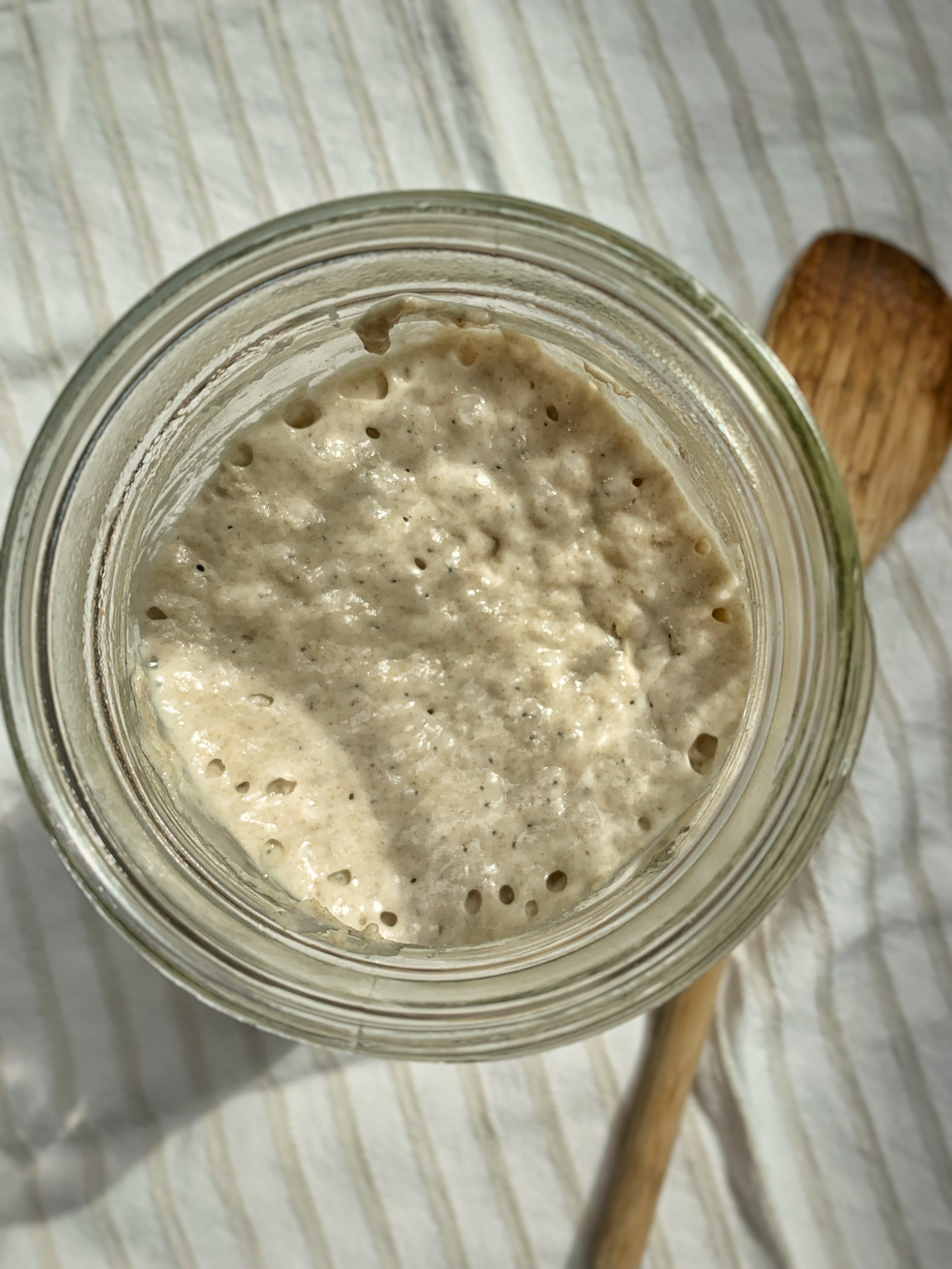What is this goo?
sourdough culture, part 2I really believe a sourdough starter, or culture, is one of the life’s ugly ducklings. It’s the blah-est shade of nondescript beige. Its glumpy and sticky when you create it, soupy and stinky when you forget to feed it, and an explosion of seemingly senseless bubbles when its happy. All the while, just beige. You’d never know, looking at its lack of color and excitement, that it harbors an immense amount of color, taste, smell, performance, health, and lofty potential when you bake it into a loaf.
Sometimes the most beautiful things in life come from places you’d least expect.
In it’s simplest explanation, a sourdough starter (sourdough culture, or levain if you’re French) begins with flour and water mixed into coexistence. It’s the creation of a spongy little environment for all kinds of good (and some not- so-good) things to gather and thrive. The world, including your hands, utensils, flour, even the air we breathe, abounds with microorganisms that reproduce like bunnies given their preferred conditions. The goal of a sourdough starter is to encourage and foster the two (of the far-too-many to count) microbes we want for leavening, fermenting, and flavoring bread. Yeast and lactic acid producing bacteria.
There’s a magical (or scientific, if you’re science-y) thing that happens when you create this little environment. The process of amylases, a crazy important thing to bread bakers for so many reasons, causes the enzymes on flour, spurred by water, to convert starch into simple sugar. It’s this sugar that feeds our yeast and lactic acid producing bacteria, launching them into reproductive bliss. So we mix, feed, and gather life’s bounty in a jar of beige goo.
Why yeast and LAB (which is how I’m going to refer to lactic acid producing bacteria from here on out, to give my fingers a little reprieve from typing wordy words)? In short, yeast gives us the joy of airy leavened breads and LAB gives us flavor, preservation and safe fermentation, and a more digestible breakdown of gluten for stomach happiness and a soft crumb.
Amazing potential for one little jar.
Now, we’re no strangers to life’s way of creating an endless array of both good and bad things. Like a marriage, a starter culture contains a struggle of beneficial agents and toxic little invaders. Also like a marriage, the goal is to create and maintain a solid foundation that weakens the toxic elements and strengthens the goodness. When properly cared for and tended to, a little jar of goo can become a stable base for greatness and creativity to leap from.
The goo rulesI am constantly telling my husband that living our best life involves some discipline and follow through. Why is it that fun-loving, spontaneous people often marry fuddy-duds weighing them down with rules? As the fuddy duddy, I like to believe that knowing the rules allows you to know when (and how safely) to break them. So, here goes.
Start with a clean jar, good flour, and filtered water. In my opinion, no sense in putting all this effort in to taint the pool. We’ll go over flour and water, in all the details and recommendations, in the next posts.
Treat it like a life. After all, it is living and the very force that will propel every loaf of sourdough you’ll make. Watch it, feed it, and learn to recognize its good and bad moods.
Be safe. there are signs of neglect and sometimes just dumb luck, that show up when your starter isn’t healthy. Take note, caution and action, whether its a first-aid response or those sad moments when a eulogy is in order.
Give it, and yourself, grace. No one is perfect and there will be missteps. And a few of those “what-in-the-world…” moments. As in the rest of life, you win or you learn. Either way, the journey’s not over.




